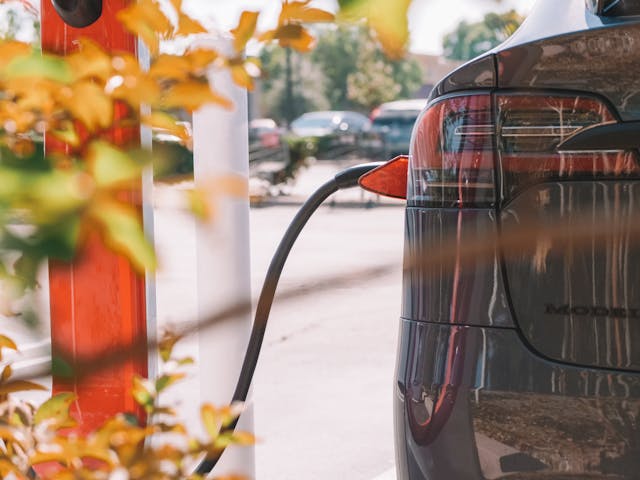

Five of the most powerful nations in South-east Asia, namely Indonesia, the Philippines, Singapore, Thailand, and Vietnam, have stated their ambitious projection to recover their economic growth in the upcoming year. Each of the plans constitutes various iterations throughout the countries' leading industries to further catalyst the conditions to pre-pandemic momentum.

Singapore aims to vaccinate all adults by September 2021, further supporting the consumer goods sector and reviving tourism activities. Singapore's government has stated its forecast of GDP growth of 4% to 6%, with the most significant contribution from the construction sector by 24% growth and transportation sector by 27% growth trajectory, an improvement from the 3.8% preliminary announced in January.
Similarly, Indonesia has predicted its GDP to grow between 4.5% to 5.5% in 2021. Its vaccination program intends to reach 70% of its total population by March 2022. Moreover, the government plans to spend a near-record high allocation for infrastructure development, specifically toll-roads, airport, and energy-generation. The program would help boost domestic purchasing power that has significantly declined in the previous year. However, the efficiency level of the vaccination program in Indonesia might face logistical challenges due to its complex demographic distribution and geographical dispersion.
The Philippines, in contrast, has a slightly more optimistic projection on their growth range. With the reopening of its economy and the release of a tax incentives program that aims to improve a competitive and level-playing field for businesses, Philippines' officials predicted a range of 6.5% to 7.5% growth with optimization throughout its industries.
As the nation's key industry, Thailand's tourism sector is expected to bounce back within the fourth quarter of 2021, assuming the efficacy of the COVID-19 vaccination program is optimal. The prediction further dragged Thailand's insight on the 2021 forecast to 2.5% to 3.5% growth.
Meanwhile, Malaysia remains its cautious approach, having reached the worst GDP performance since the 1998 financial crisis; the Malaysian central bank hopes the rebound of its economy will be backed by global demand and recovery in domestic economy activities. There are still numerous downside risks regarding the pace of infrastructure development to Malaysia's attempt to normalize its economy.
The leading nation in this year's recovery falls to Vietnam, with 2.9% economic expansion during the global crisis. Vietnam managed the virus containment to only a total of 2.100 cases and boosted electronic exports, enabling trust and confidence to predict a 6.5% annual growth rate. Experts believe United States' tariffs regulation towards China and the newly-released EU-Vietnam Free Trade Agreement (EVFTA) will positively impact Vietnam's export traffic on Chinese goods, as importers find alternative suppliers can provide cheaper and simpler trade processes. The tariff elimination would include technology manufacturing, textiles, clothing, and agricultural products.
As a high-performing region with a young and ambitious demographic and active government's intervention in bouncing back the recent crisis, South-east Asia is undoubtedly an attractive investment destination. However, the nations would need to ensure their vaccination program's effectiveness before they could jumpstart the economy and invite foreign direct investments to establish hope to their recovering industries once again.

Digital Lending in Southeast Asia: Current Trends and Future Outlook
Digital lending in Southeast Asia (SEA) has been on an upward trajectory, significantly enhancing financial access for both individuals and businesses. The region's high internet and mobile penetration rates have facilitated this growth, enabling more people to access financial services conveniently. Governments across SEA are actively promoting digital lending as a means to improve financial inclusion, particularly for the underbanked and unbanked populations. For instance, digital lenders in countries like Indonesia and the Philippines have capitalized on the surge in internet usage to offer innovative lending solutions.

The Latest Trends and Developments in SEA’s Digital Payments Landscape
The adoption of digital payments in Southeast Asia (SEA) has accelerated, driven by technological advancements, government initiatives, and changing consumer behaviors. It has evolved from simple online transactions to sophisticated financial ecosystems that include various payment methods such as mobile wallets, QR code payments, and Buy Now Pay Later (BNPL) options.

Navigating the Digital Era: Future Jobs and Skills in the Age of Digitalization
The job market's transformation driven by digitalization highlights the need to understand emerging trends and acquire essential skills for thriving.

Navigating Key Challenges in Southeast Asia’s EV Market
Southeast Asia (SEA) finds itself at a crucial juncture in the journey towards electric vehicle (EV) production and adoption as the world transitions towards sustainable transportation solutions. The region has several significant keys for developing the EV industry, such as Indonesia's nickel supply and Thailand's EV manufacturing potential. However, the ASEAN EV industry faces many challenges and threats that must be overcome to ensure success in the region.